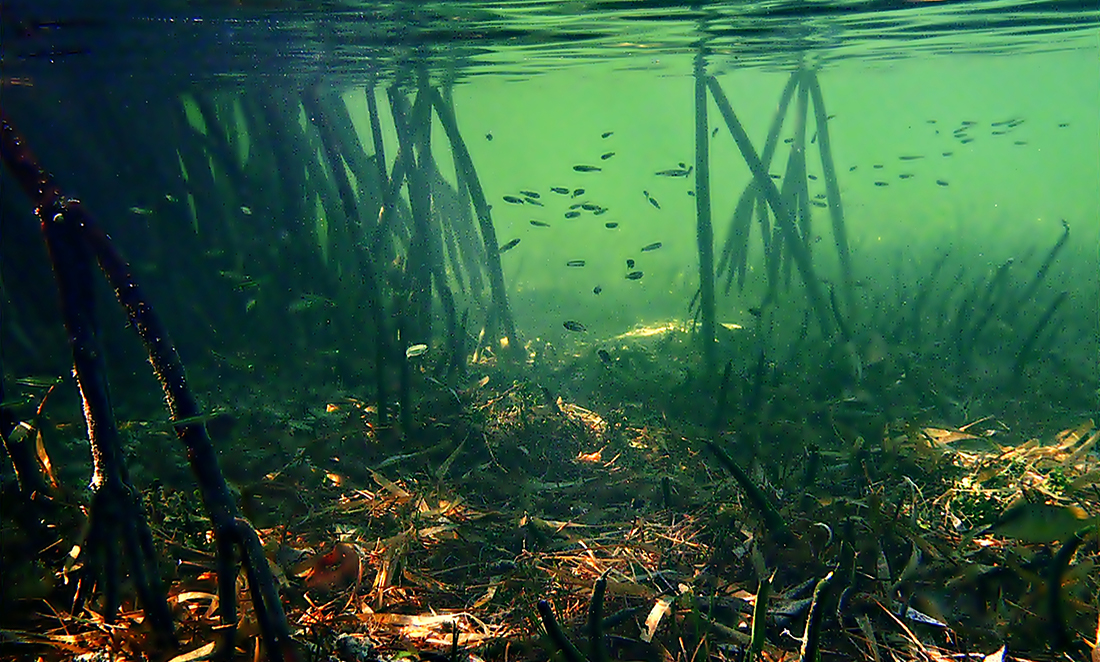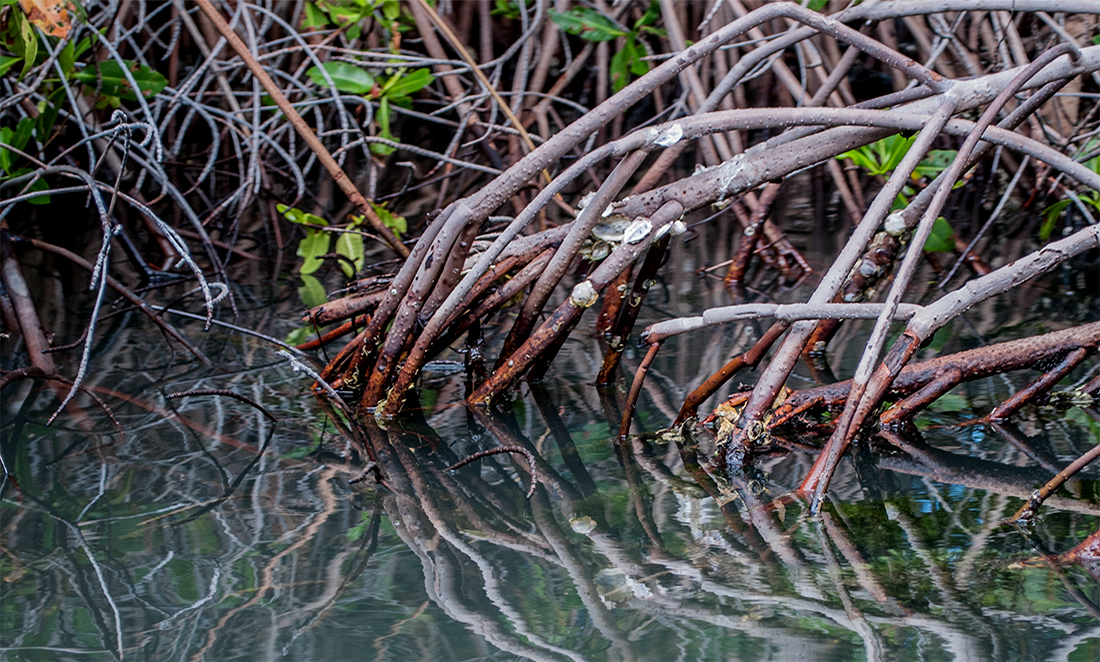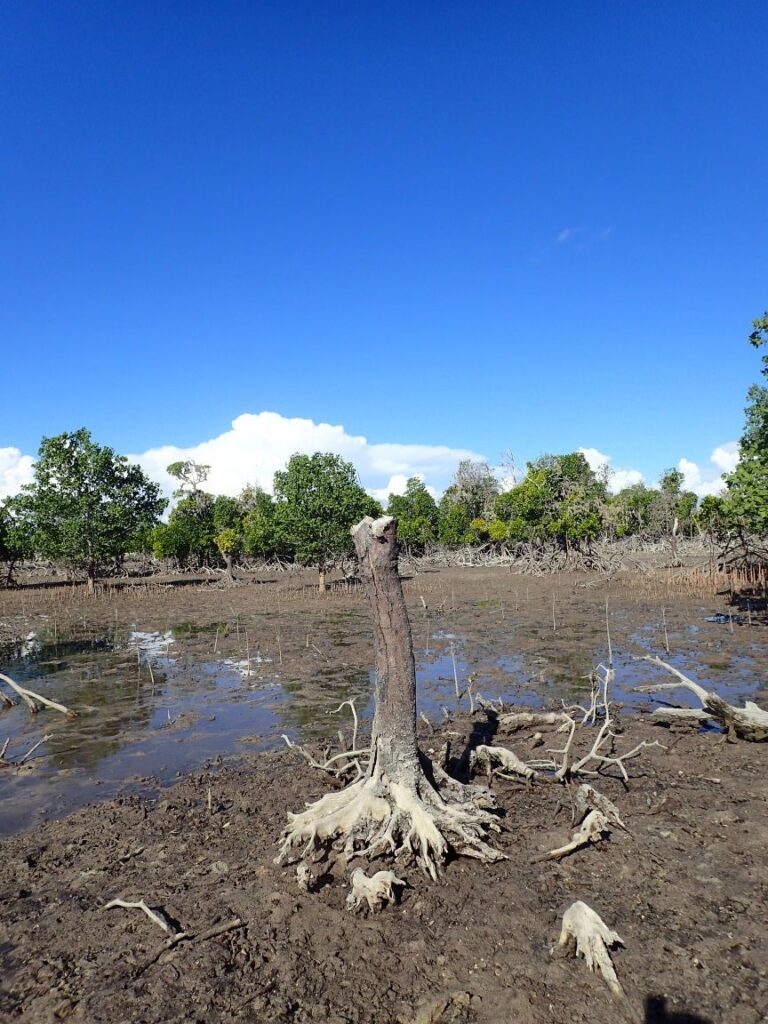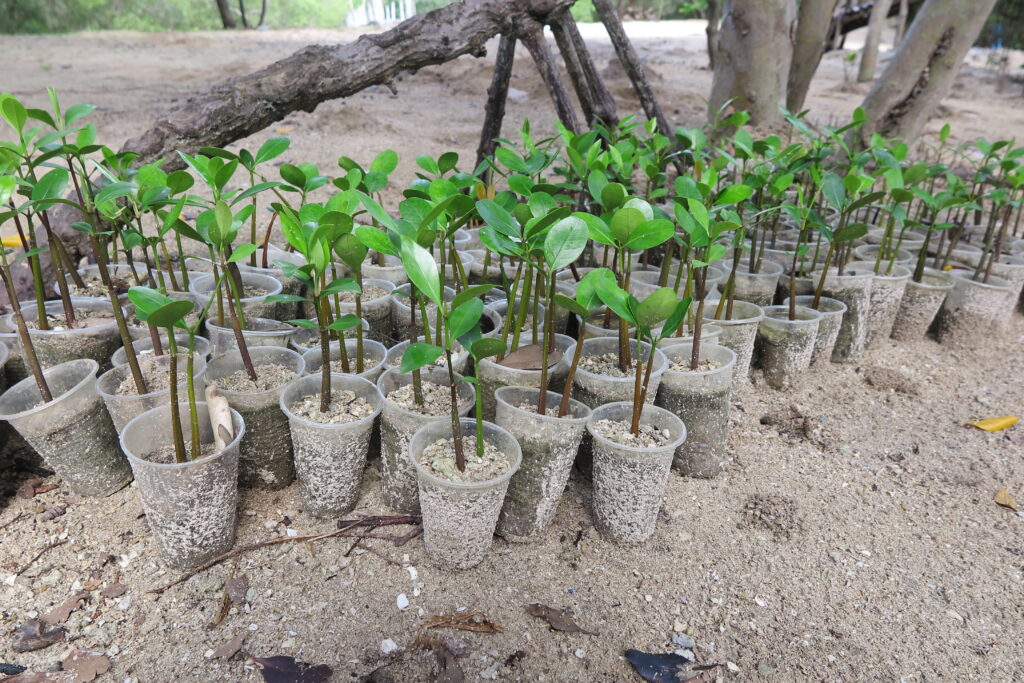Breathe deeply. All that lovely oxygen you’re getting right now was recycled somewhere by plants (and plankton). But it’s not just the land-based plants responsible for restoring Earth’s oxygen supply—marine plants also play an important role.
Mangroves, seagrasses and inhabitants of salt marshes are just some of the plants responsible for creating something called blue carbon. But this important part of underwater ecology looks more brown and green than a pretty aqua hue.

Cracking down on carbon
It works like this: marine plants capture carbon dioxide during photosynthesis, just like their terrestrial siblings. The plants transform the carbon into carbohydrates, which are then used by the plant to grow stems, leaves and flowers. When the plant dies, the carbon locked in its tissues is trapped, stored underground.
Mat Vanderklift, a marine ecologist at CSIRO, says because this trapped carbon is waterlogged, very little oxygen gets to it and it cannot decompose. The carbon can remain trapped much more efficiently than land-based carbon traps, like trees.

This removes carbon dioxide from the atmosphere. Atmospheric carbon dioxide levels are rising, causing global warming, and human-caused carbon dioxide is the largest contributor.
Australia and many other countries around the world are looking at how we can harness blue carbon to help combat global warming.
Mat is researching how Australia can create a blue carbon economy.
A blue carbon economy is a model where businesses can pay to support renewing wetlands and coasts to help prevent environmental damage. It can help make a business environmentally ethical and balance out its own carbon emissions. For certain businesses like fisheries, blue carbon economies can even help secure their future.
“In salt marshes, seagrasses and mangroves, the carbon is stored underground,” Mat says.
"They dig their roots in deep, and because the carbon is underground, it takes a long time to decompose. That carbon is trapped there, and it doesn’t enter the atmosphere.”
These marine ecosystems are such great carbon catchers they can be more effective than rainforests in cleaning our atmosphere of carbon dioxide.
The mangrove disappearing act
Unfortunately, while we’re pumping more carbon dioxide into the air than ever before, we’re also losing vast swathes of our blue carbon ecosystems.
The world has lost 50% coverage of its tidal marshes and mangroves in the past 10 years alone. Deforestation, farming, construction and climate change all contribute to these losses. What’s more, when we lose the mangroves and marshes, the carbon trapped by these plants can re-enter the atmosphere.
It’s not all bad news though. Scientists like Mat and the general public are all getting together to bring back these marine ecosystems.
“If all you want to do is trap carbon, well that’s easy to upscale. But that’s often not all we want to do. We want to replenish fish stocks or increase biodiversity and bring back the plants and animals that used to live in these ecosystems,” Mat says.
Bringing back mangroves, salt marshes and seagrasses also helps bring back animals that call these ecosystems home.
Stopping the great ocean grab
This is particularly good news for coastal communities that rely on fishing for food and work. Mat says working with these coastal communities is a vital part of making sure replenished marine environments survive.
“The old colonial way doesn’t work. We can’t just go in and tell people what to do. We have to start conversations with them so they understand the benefits to their communities.”
By working with local communities, we can clean the air, restore our ecosystems and increase available fish for local communities.











